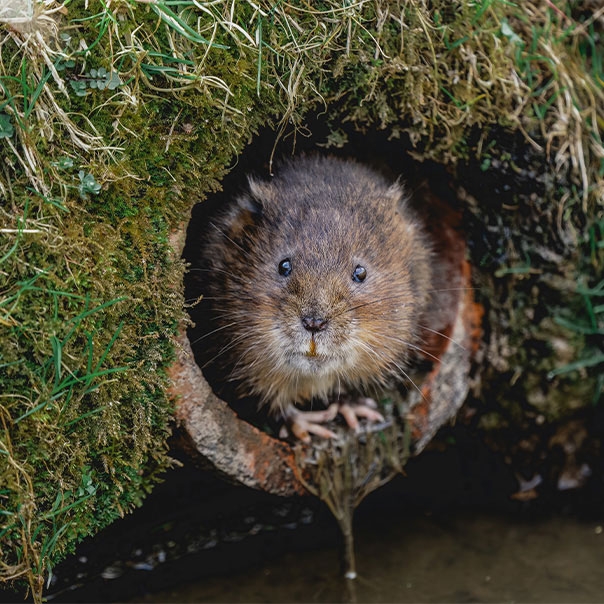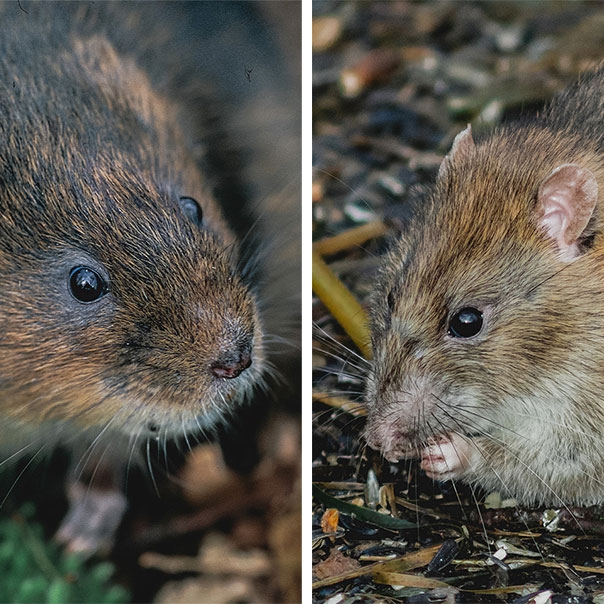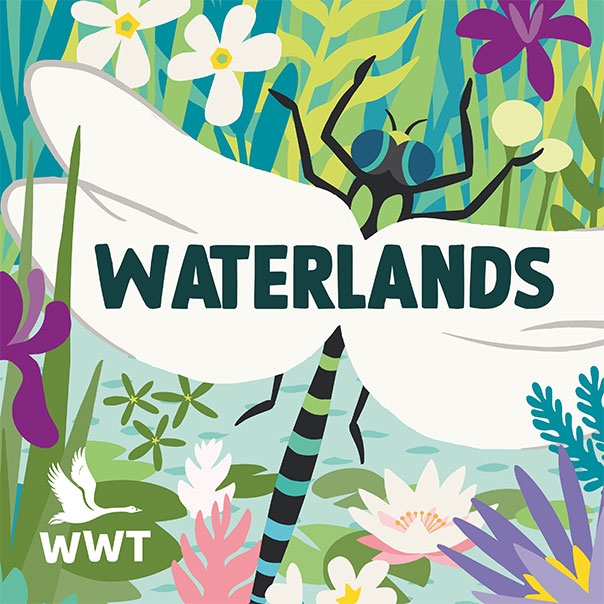Water vole
Scientific name: Arvicola amphibius
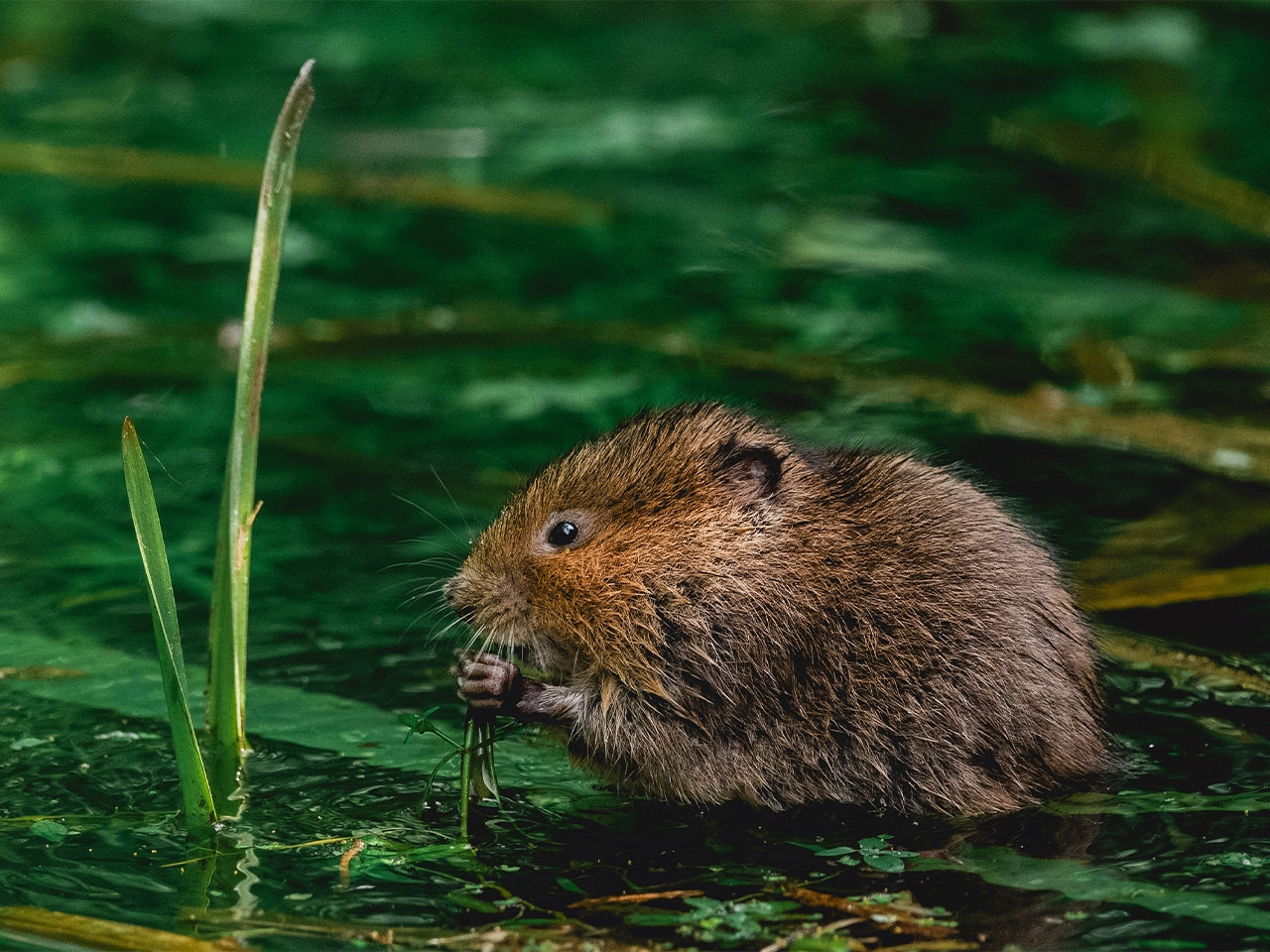
Formerly common throughout mainland Britain, the water vole has suffered the most dramatic decline of any mammal in the UK over the last century.
Key information
Protected by “The Wildlife and Countryside Act 1981”
Priority species under the UK Post-2010 Biodiversity Framework
Length: 14-22 cm
Tail: 9.5-14 cm
Weight: 150-300 g
Average lifespan: 0.5-1.5 years
GB Population: 875,000
What do water voles look like?
The water vole is the largest vole in Britain and is about the size of a rat but with a blunt nose. It has dark chestnut-brown to black fur and short rounded ears. Its tail is covered with hair and is about half the length of its head and body.
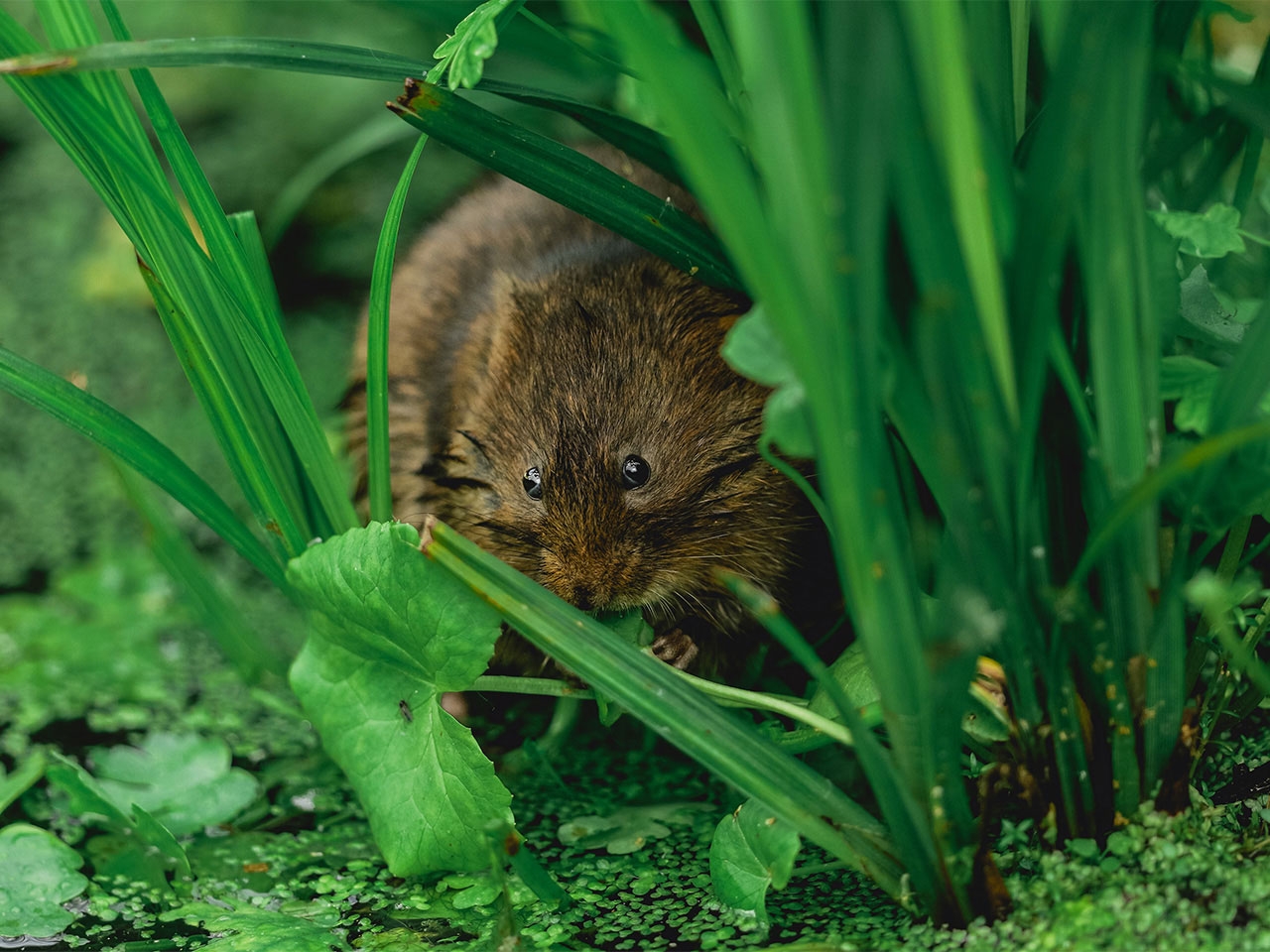
Not to be confused with...
Water voles (left image) are very similar in appearance to brown rats (right image), but differ in that unlike the rat their paws, tail and ears are covered with fur. They also have shorter, chubbier faces.
Water voles vs. rats: how to tell the difference
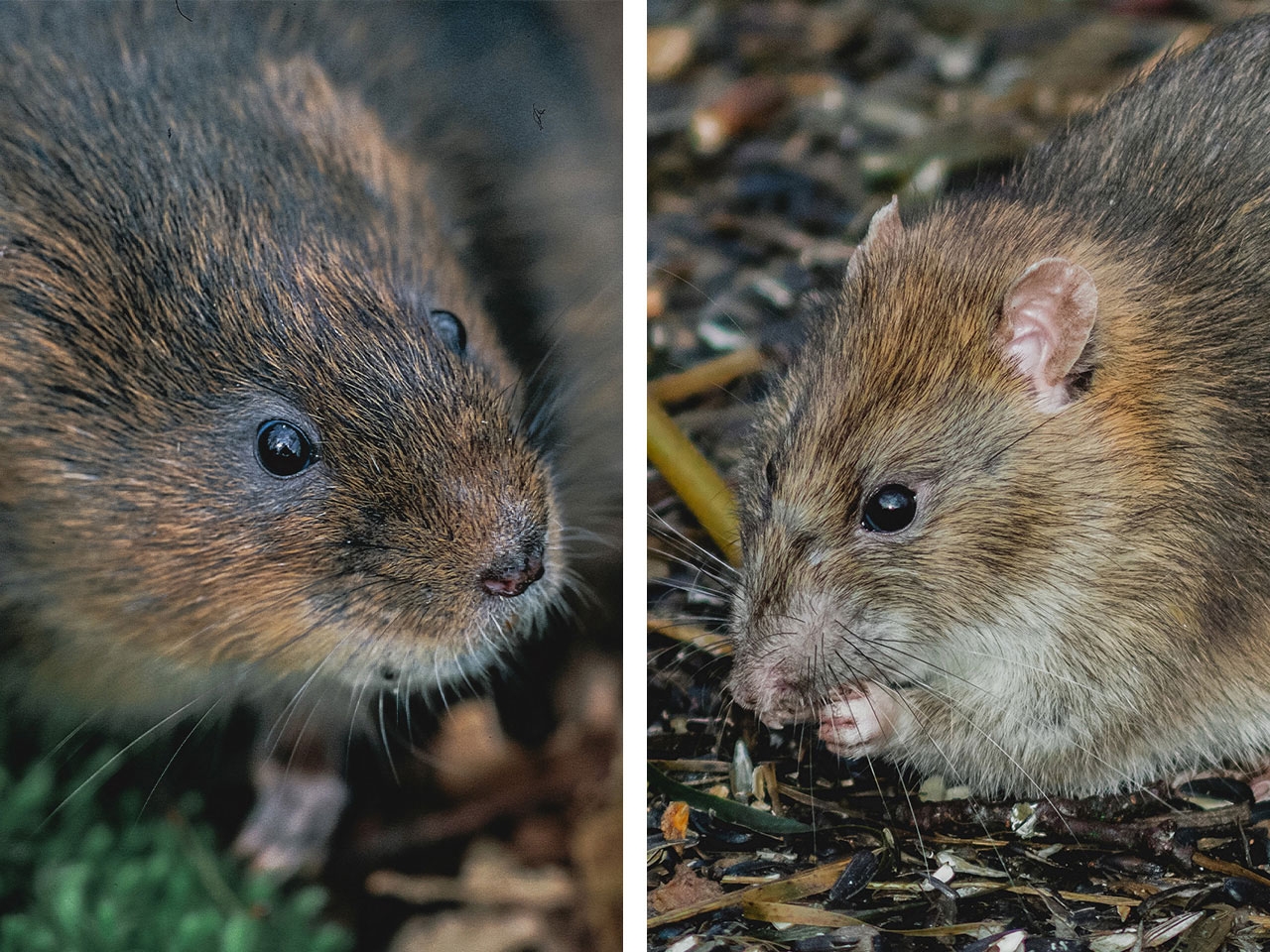
Where do water voles live?
Rivers, streams, ditches, ponds and canals; anywhere a soft bank can provide a home.
What do water voles eat?
They eat grasses and waterside vegetation: 227 different plant species have been identified in their diet. Pregnant water voles often try and find more protein rich sources of food like flowers and snails and have recently been reported eating frog’s legs.
Why are water voles important for wetlands?
Water voles play an important part in creating a healthy wetland. Like beavers, but on a much smaller scale, their burrowing, feeding and movements help create conditions that allow other animals and plants to survive.
Water voles at WWT
Where and when can you see water voles at WWT?
You can see water voles throughout the year along our waterways and around ponds, lakes, marshes and reedbeds. While they don’t hibernate as such, they spend most of their time in burrows in the winter. In March and April they start to get active and breed and this is a good time to see them.
Look out for signs of their presence, such as burrows in the riverbank, often with a nibbled ‘lawn’ of grass around the entrance, ‘latrines’ of cigar-shaped droppings and ‘feeding piles’ where they’ve cut lengths of plant to eat, carrying them to a favoured eating location.
Water voles can also be found at WWT Martin Mere, Steart and Welney.
How can you help water voles?
If you have streams or ponds in your garden or on your property, you can help by maintaining the vegetation on the banks. Plant native wetland plants like yellow flag iris, greater pond sedge, and different types of rushes on any bare spots.
If you’re out walking near canals or rivers, stay on paths and keep dogs on a lead to reduce disturbance.
Help us create more wetland habitats for water voles. WWT is the charity for wetlands and wildlife. We’re on a mission to restore wetlands because they are a wondrous solution to the problems our world faces. Together we will unlock their power and help nature burst back to life.
In the UK, we have ten wetland sites that we manage for the wildlife they support, including rare and protected species such as the tadpole shrimp.
Become a member
Get free access all year to explore these extraordinary places while knowing that your membership is also helping us save wetlands and their wildlife in the UK and abroad. Plus, you’ll receive exciting updates on our wildlife news, find out about events on your doorstep and be the first to hear about our volunteering opportunities.
Join us